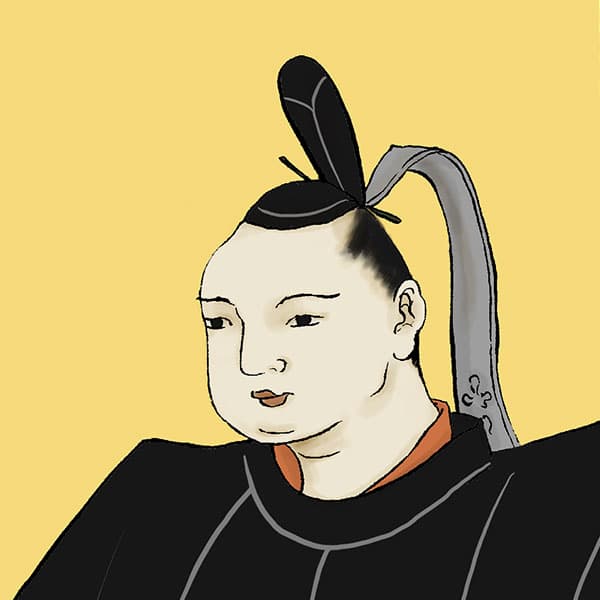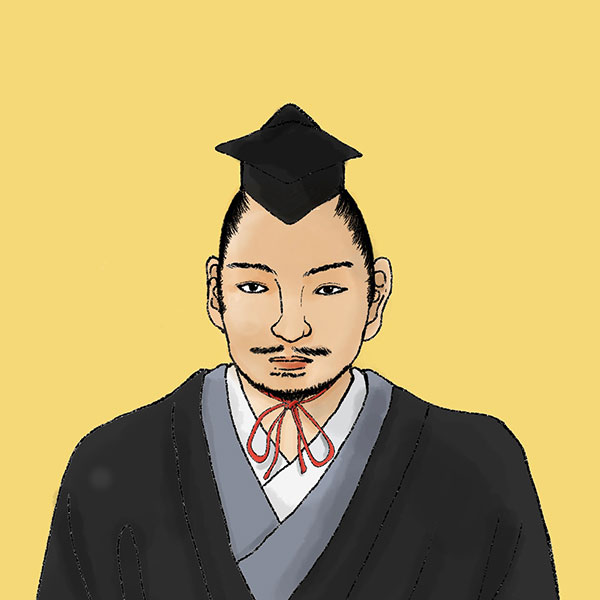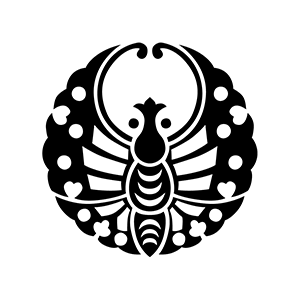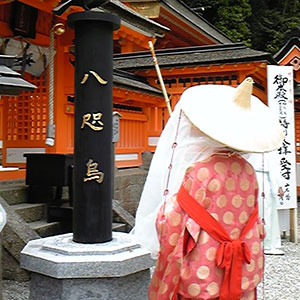- Okayama domainHideie Ukita built the foundation and the Ikeda clan ruled.
- The Okayama domain was a large Tozama domain that owned all of Bizen and part of Bicchu. It was built by Hideie Ukita, who joined the Western army at the Battle of Sekigahara and was later exiled to Hachijojima, and Tadatsugu Ikeda, the second son of Terumasa Ikeda, who went through Hideaki Kobayakawa to build Himeji Castle into its current form.

Okayama CastleOkayama City, Okayama Prefecture
- spring
- summer
- autumn
- winter
- TOP
- China
- Okayama Prefecture
- Okayama Castle
| Other name | Crow Castle, Kinkara Castle |
|---|---|
| castle construction | 1346 |
| address | 2-3-1 Marunouchi, Kita-ku, Okayama City, Okayama Prefecture |
| telephone number | 086-225-2096 |
| Opening hours | 9:00-17:30 (Admission until 17:00) |
| closing day | December 29th to December 31st |
| Admission fee | Adults 320 yen / Elementary and junior high school students 130 yen |
- Access to Okayama Castle
- From JR Okayama Station, get off at the tram "Joshita" and walk 10 minutes.
HISTORYOkayama Castle, where a famous Sengoku warlord became the castle owner
Okayama Castle is a flat castle located in Kita Ward, Okayama City, Okayama Prefecture. It was the home of the Ukita family, famous for being exiled at the Battle of Sekigahara, and in the early Edo period, Hideaki Kobayakawa, who also betrayed the Western army at the Battle of Sekigahara, served as the lord for a time. It also has another name: Ujo (crow castle) and Kinujo (crow castle). Let's unravel the history of Okayama Castle.
- To the construction of Okayama Castle
- It is said that Okayama Castle began during the Shohei era of the Nanbokucho period when a man named Takanao Kamigami built a castle on Ishiyamadai. It should be noted that although there is a description in the ``Bizen Gunki'' compiled in the late Edo period that Takanao Kamigami built a castle on Ishiyamadai, there is no record of Okayama Castle for about 150 years after that. However, it is believed that the city was prosperous because the center of Shikata-sho, one of the Fujiwara clan's manors, was located near where the castle was built at that time, and a city was built there, albeit on a small scale. As time went on, during the Taiei era (1521-1528), the Konmitsu clan, an indigenous feudal lord, used the castle as their residence.
- Construction of Okayama Castle
- In 1570, Naoie Ukita defeated Munetaka Konmitsu, the lord of Ishiyamadai Castle, and acquired the land of Okayama. Naoie Ukita was a vassal of Munekage Urakami, a family of the Urakami clan, the governor of Bizen, but he rapidly expanded his influence mainly in western Bizen, and eventually rose to become a feudal lord in the Sengoku period. In 1573, Naoie moved from his previous residence, Kameyama Castle (Numa Castle), to Ishiyama Castle, which had been the residence of the Konmitsu clan, and renovated the castle and formed a castle town. At that time, Ishiyama Castle was a renku-style castle whose territory ran from east to west, but Naoie Ukita rebuilt it so that it ran along the Saigoku Kaido road at the foot of the northern mountain to the south of the castle, attracting merchants from Bizen Fukuoka and Bizen Saidaiji Temple. I called them in and set up the castle town.
Hideie Ukita, a military commander who became a member of the Five Elders under the Toyotomi government and was exiled to Hachijojima after losing the Battle of Sekigahara, is the eldest son of Naoie Ukita. After the death of his father, Naoie, Ukita Hideie inherited most of his father's estate under the Toyotomi government, becoming a daimyo with a huge territory of 574,000 koku. After taking over as head of the family, Hideie spent eight years undergoing major renovations from 1590 to 1597. At this time, Hideie set up his main castle in Okayama, where the remains of the castle still remain today, and made the main castle of Ishiyama Castle the Ninomaru inner enclosure, and the Ninomaru the Nishinomaru. Then, the Ninomaru and Sannomaru enclosures were built across the inner moat. The castle tower was a magnificent four-story, six-story gazebo with gold leaf tiles. Also, because black lacquered boards were attached to the walls of the castle tower, it was given the other name ``Crow Castle.'' The castle, which underwent major renovations, now faces the west and has an extremely weak defense on the east side. For this reason, Hideie Ukita even carried out large-scale river alteration work, reorganizing the main stream of the Asahi River from the north to the east of the castle. As a result, Asahikawa became a natural moat for Okayama Castle, but due to the unnatural construction, the castle town eventually suffered from frequent floods, and in later years the Hyakken River was constructed as a drainage channel.
He then invited influential merchants within the territory to the castle town established during the Naoie era, encouraging further economic development. There is an opinion that the construction of this castle was influenced greatly by the wishes of Toyotomi Hideyoshi, the father-in-law of Hideie Ukita's wife. This renovation can now be called castle construction, and it is said that the builder of Okayama Castle, of which the ruins remain today, was Hideie Ukita. Furthermore, with the construction of this castle, the area was established as ``Okayama'' and the name of the castle was established as Okayama Castle. - Okayama Castle in the Edo period
- During the Battle of Sekigahara in 1600, Ukita Hideie sided with the Western army and was exiled to Hachijojima. He was the longest-lived military commander who participated in the Battle of Sekigahara in this area, dying at the age of 85. Okayama Castle was given to Hideaki Kobayakawa, who is famous for betraying the Western army and joining the Eastern army during the war, in place of the Ukita family, who were given the reins. When he became the lord of the castle, he expanded the castle town by widening the middle steps of the main keep, digging an outer moat of more than 15 squares outside the Sannomaru, and improving the Sannogawara. This expansion work was completed in just 20 days, as it mobilized not only farmers but also people from the samurai class. Therefore, this outer moat was named "Nijokabori" and is now the main street of Okayama City. Hideaki Kobayakawa continued to renovate the castle and relocated the Numagusuku castle tower to the south corner of the middle section. This came to be called Onato Yagura and became the largest turret at Okayama Castle. However, Hideaki Kobayakawa suddenly died in 1602, just two years after becoming the lord of the castle, and as he had no legitimate children, the Kobayakawa family became extinct. Afterwards, this land was given to Tadatsugu, the second son of Terumasa Ikeda, the lord of Himeji Castle in Harima, but since he was only 5 years old, his older brother Toshitaka Ikeda ruled on his behalf as ``Bizen Kankoku,'' and the land was given to Tadatsugu, the second son of Terumasa Ikeda, the lord of Himeji Castle in Harima. We will maintain Nishinomaru at the western end.
Ikeda Tadatsugu entered Okayama Castle in 1613, but died two years later and was succeeded by Tadatsugu's younger brother, Ikeda Tadao. Tadao Ikeda significantly expanded the middle tier of the main enclosure to the north, and added the main tier's palace and the main shoin. Also, the Tsukimi Yagura, which is designated as an important cultural property, was built at this time. In addition, the main south gate will be rebuilt, and the Nishikawa irrigation canal that limits the western edge of the castle town will also be constructed. Okayama was ruled by the Ikeda family throughout the Edo period, and successive castle lords regularly rebuilt and expanded the castle. Korakuen, which still remains as a famous spot in Okayama, was founded by Tsunamasa Ikeda, the son of Mitsumasa Ikeda, who was transferred from Inaba Tottori in 1632. He also carried out renovations and maintenance of the Hyakken River. - Okayama Castle after the Meiji era
- In the Meiji period, Okayama Castle came under the jurisdiction of the Ministry of Military Affairs, and in 1888, when the castle abolition ordinance was issued, the moat was filled in and most of the buildings were demolished, and the castle tower, Tsukimi Yagura, Nishinomaru Nishi-te Yagura, Only Ishiyamamon remains. The area that was once the castle grounds of Okayama Castle will be redeveloped into the Okayama city area. In 1931, the castle tower was designated as a national treasure based on the old law, but both the Ishiyama Gate and the Ishiyama Gate were burnt down in the Okayama air raids in 1945. In 1950, the Tsukimi turret and Nishinomaru Nishite turret, which survived the air raids, were designated as important cultural properties. After that, it took three years from 1966 to 1966 to rebuild the castle tower, the unknown gate, the corridor gate, the 61-gangi gate, and part of the wall using reinforced concrete. In 2006, it was selected as one of Japan's 100 Famous Castles.
The current Okayama Castle is a tourist attraction that represents Okayama, but it has been closed since June 1, 2021 due to major renovations. Renewal opening is scheduled for November 2020. In addition, Okayama Korakuen is one of Japan's three most famous gardens, and is visited by many tourists not only from Japan but also from overseas.
Read about people related to Okayama Castle
History of the Okayama Domain, with Okayama Castle as its domain office
| Domain office | Okayama Castle |
|---|---|
| old area | Okayama, Mino District, Bizen Province |
| stone height | 315,000 koku |
| Fudai/Tozama | Foreigner |
| main lord | Mr. Ukita, Mr. Kobayakawa, Mr. Ikeda |
| Estimated population | 350,000 people (first year of the Meiji era) |
Tadatsugu Ikeda, grandson of Tokugawa Ieyasu, replaced Hideaki Kobayakawa, who defected during the Battle of Sekigahara. During Mitsumasa's reign, he opened the Okayama School, a domain school ahead of the rest of the country. His son, Tsunamasa, also worked to establish the domain's government, including building Kairakuen. The 9th Shigemasa was the younger brother of Shogun Yoshinobu.
Okayama Castle column
Introduction column by castle enthusiasts
















